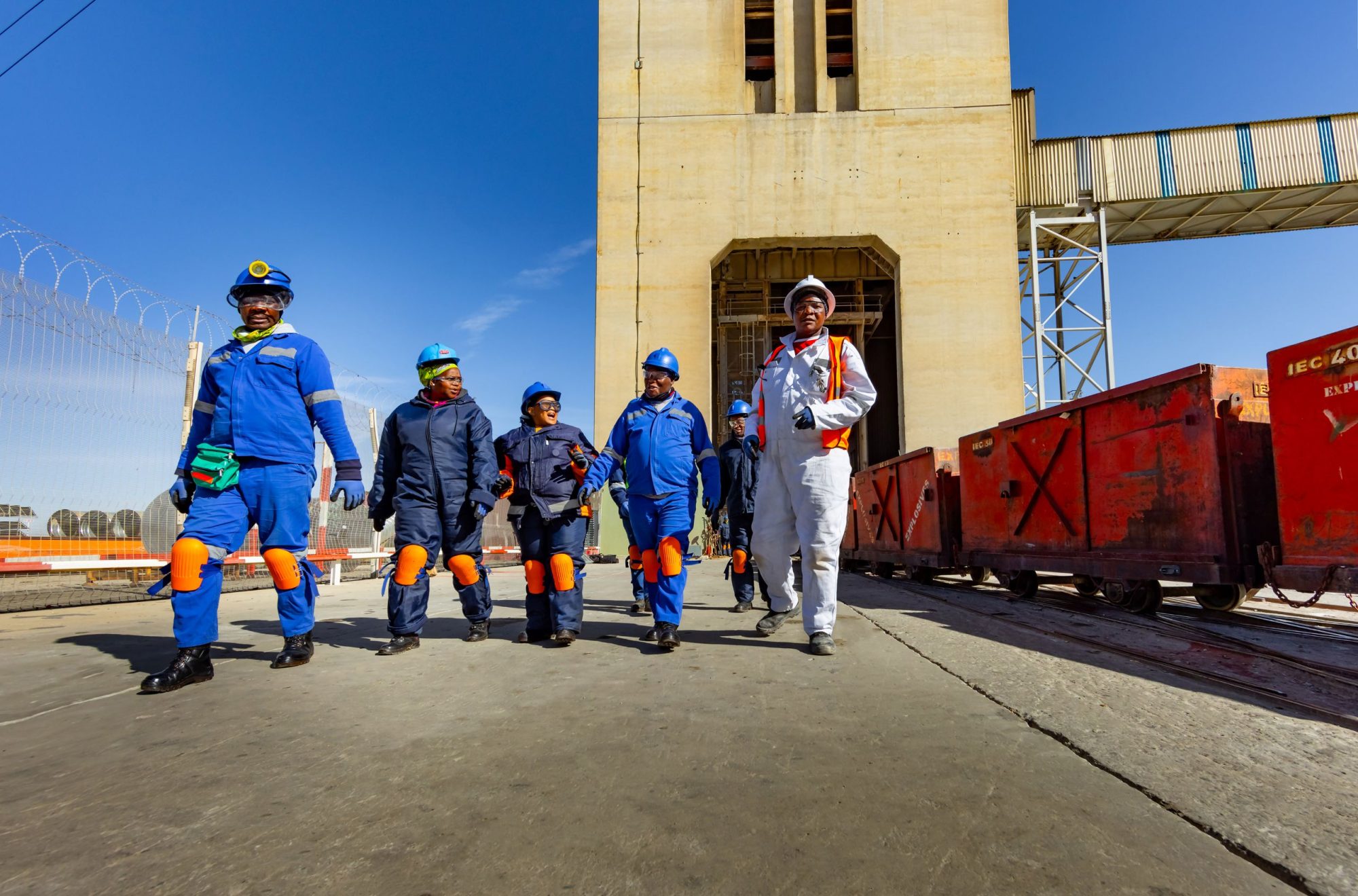We tap into a diverse array of perspectives and talents, driving innovation, and ultimately, sustainable success. We return benefits through impactful programmes such as employee development, employee shareholder or bonus schemes and job retention programmes, and ensure freedom of association while recognising the value that organised labour creates. We articulate respect for human rights in our engagement contracts and human resources policies.
In FY24:
- We spent R18.6 billion (FY23: R17.5 billion) on wages and benefits, and R840 million (FY23: R817 million) on training
- Of our wages and benefits expenditure, R17.3 billion was spent in South Africa, R876 million in Papua New Guinea, and R368 million in Australia
- Of our training expenditure, R808 million was spent in South Africa, R31 million in Papua New Guinea, and R1 million in Australia
Our approach
Harmony, our surrounding communities and broader society benefit from having an experienced, engaged and diversified workforce. We invest in their wellbeing, development and empowerment, and have meaningful engagements – all of which lead to a safe, healthy and productive working environment.
Based on mutual respect and trust, our employee relations are supported by living our values and culture, and understanding and addressing our employees’ needs and expectations through meaningful engagements and collaboration.
Embrace our rich diversity and uphold equity with respect for local communities
We are committed to fostering a workplace free from discrimination, with leadership actively promoting gender inclusion and equal opportunities. We support women through dedicated forums, conduct regular surveys on gender-based issues, and implement targeted interventions while participating in global campaigns against gender-based violence.
Encourage employees to invest in their development
Our development programmes aim to address historical disadvantages while providing equal opportunities through accredited training centres and learning initiatives. We support both technical and non-technical skills development, offering employees study assistance for formal education ranging from first degrees to executive qualifications at preferred institutions.
Ensure freedom of association through organised labour structures that promote business improvements
Aligned with the International Labour Organization guidelines, our employment policies and practices comply with labour legislation in South Africa, Papua New Guinea and Australia. In South Africa, we have five recognised trade unions that are part of our bargaining structures.
Regional performance
Our workforce profile is as follows:
South Africa
Permanent employees
33 123 (FY23: 33 341)
Employees from local communities (%)
84% (FY23: 83%)
Age profile
56% (FY23: 57%) younger than 45 years
We attribute this to recruiting youths who graduate from our South African community training programme.
Papua New Guinea
Permanent employees
1 465 (FY23: 1 472)
Host community (local) employees1
40% of employees (FY23: 41%)
6% in management (FY23: 6%)
National employees2
97% of employees (FY23: 97%)
60% in management (FY23: 66%)
Australia
Permanent employees
127 (FY23: 100)
First Nations Australians3
1% of employees
1 Host community employees includes employees from landowner villages and host districts.
2 Persons who are nationals of Papua New Guinea.
3 Persons of Aboriginal or Torres Strait Islander descent as voluntarily disclosed.
South Africa
In South Africa, significant progress was made in employee development and transformation. We achieved our employment equity and HDP targets, with notable increases in female representation at management levels and in learning interventions. However, we have not yet achieved our junior management target of 30% female representation.
We conducted anti-sexual harassment and unconscious bias training and established forums to advance women’s voices in the workplace. A landmark five-year wage agreement was signed with all five trade unions, demonstrating strong labour relations.
We invested R808 million in training and skills development, reaching 94% of the workforce. The Mining community skills programme successfully placed 893 out of 1 036 learners into meaningful permanent occupations. Training and development initiatives included various programmes such as:
- Engineering programmes: Two engineers in our talent pool and five junior engineers onboarded; 377 candidates continued with learnerships
- Graduate development programmes: Eight students sponsored in core disciplines; permanently employed four learners
- Study assistance programme: We invested R8 million in 320 employees completing various diplomas and degrees
- Mining training programme: 50 male and 16 female employees developed as shift bosses; 46 learner miners received blasting certificates
- Adult education and training (AET): 212 employees rolled in own-time AET; 147 enrolled in full-time AET
- Bursary programme: 114 students awarded bursaries worth R16 million
- Mathematics, science and language enhancement project: Helped 720 grade 10 to 12 learners and teachers achieve excellent maths, science and English results
- Portable skills training: 396 current and retrenched employees and their dependents received training
- Leadership development: 495 candidates enrolled in FY24
- Internships: 145 interns provided with first-hand, practical exposure to the work environment
- Mining community skills programme: 1 036 community members trained
- Mining community upliftment programme: 150 beneficiaries across Gauteng, North West and Free State
Social leases were provided to support community development, with 36 properties leased mainly to NPOs and education-related institutions. The region also promoted home ownership through its housing and living conditions strategy, with 521 employees purchasing company properties and 467 properties registered at the deeds office.
Papua New Guinea
In Papua New Guinea, the focus was on maximising national content and local employment opportunities. The region maintained a strong commitment to local employment, with 97% of employees being Papua New Guinea nationals and 40% from local host communities. Employee turnover decreased to 12% due to ongoing retention efforts, roster improvements, and focus on quality leadership and employee engagement.
We also implemented initiatives to support employee wellbeing and organisational culture, including partnering with a global service provider to establish cultural index indicators. To facilitate employee access to key services, Hidden Valley initiated a programme bringing superannuation, taxation and national identity project representatives to site. We also expanded our leadership and supervisory development programmes, resulting in 25% of senior leadership roles being occupied by Papua New Guinea national employees.
Australia
In Australia, where the workforce primarily consists of office-based staff in Brisbane and Cloncurry offices and a growing number at the Eva Copper project site, the focus was on building a strong foundation for employee support and development. The region participated in the Gender Pay Gap report, finding no gender disparity in wages in similar roles, though plans were developed to increase female representation in senior leadership roles.
We also partnered with a professional organisation to design workplace domestic violence and family violence training across the business. Significant investment was made in learning and development, with over 252 hours of training provided in technical skills, professional development and leadership development. We implemented new financial education programmes through their Connect Hub portal and partnered with a corporate financial services rewards programme, providing employees with tools and resources for long-term financial planning and security.
FUTURE FOCUS AREAS
The Harmony Employee Value Proposition for South African operations, to be launched in FY25, will be a key enabler of empowerment for current and future employees and meeting our diversity and inclusivity target of 30% women in leadership by 2027. To maintain sound labour relations, we will continue meaningful engagements, pre-emptive issue identification and dialogue, facilitating operational stability and preventing industrial strike action.
CASE STUDIES
-
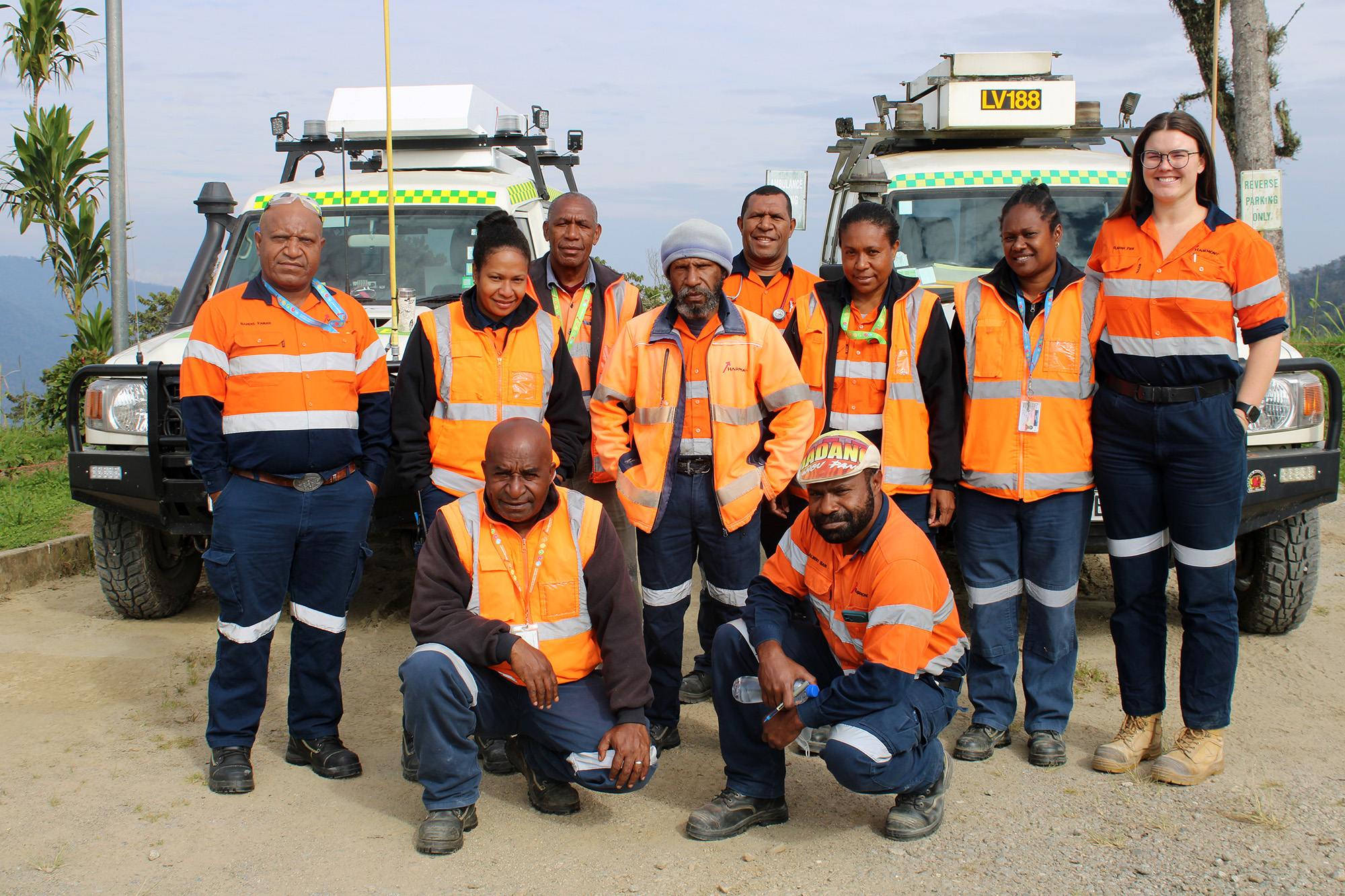
Promoting healthy lifestyles and access to healthcare
In recognition of Hidden Valley’s lifestyle disease reduction programme, community health and Pinktober campaigns, Harmony won two awards at the 17th Annual Papua New Guinea Resources and Energy Conference and Exhibition held in Sydney, Australia.
-
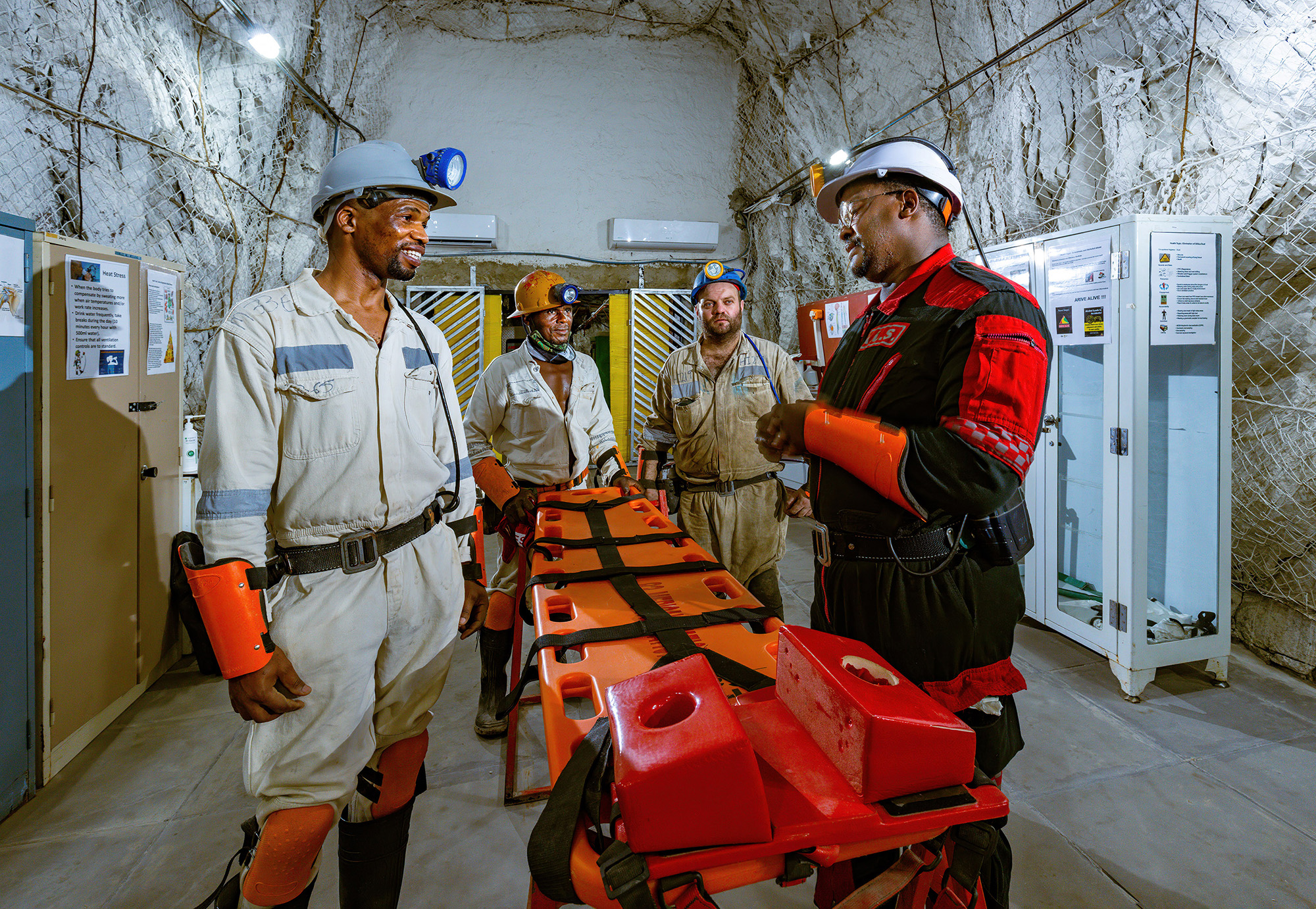
Improving mental wellbeing
The Harmony Khethimpilo campaign was created in response to the many challenges brought about by the Covid-19 pandemic, driving and enabling us to enhance our psychosocial programme and safeguard our employees’ mental health.
-
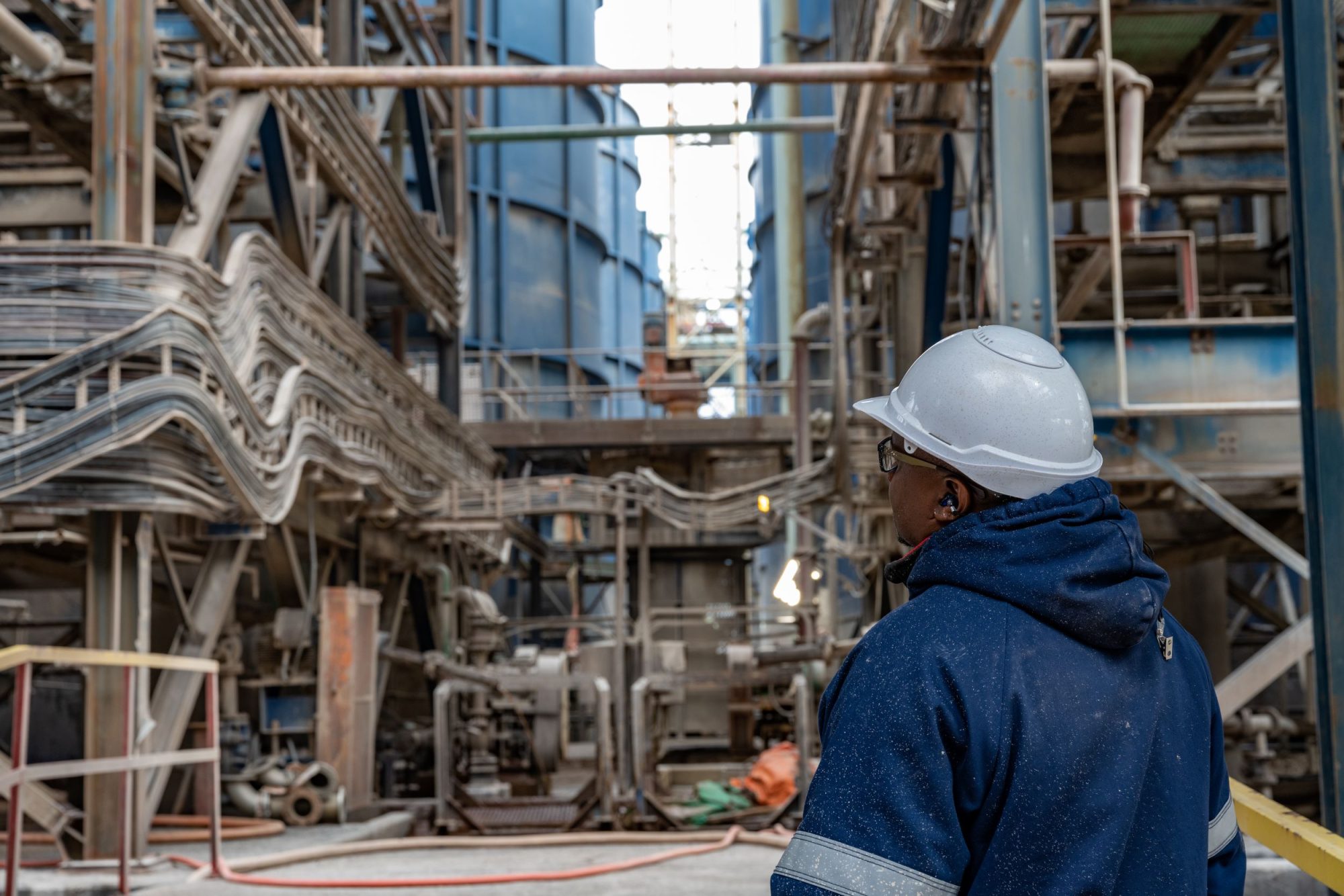
Leadership development at Harmony
The leadership competency framework that underpins this programme is broad and deep, covering inherent competencies and behaviours like leading self, relating to others, versatile leadership, and delivering results.
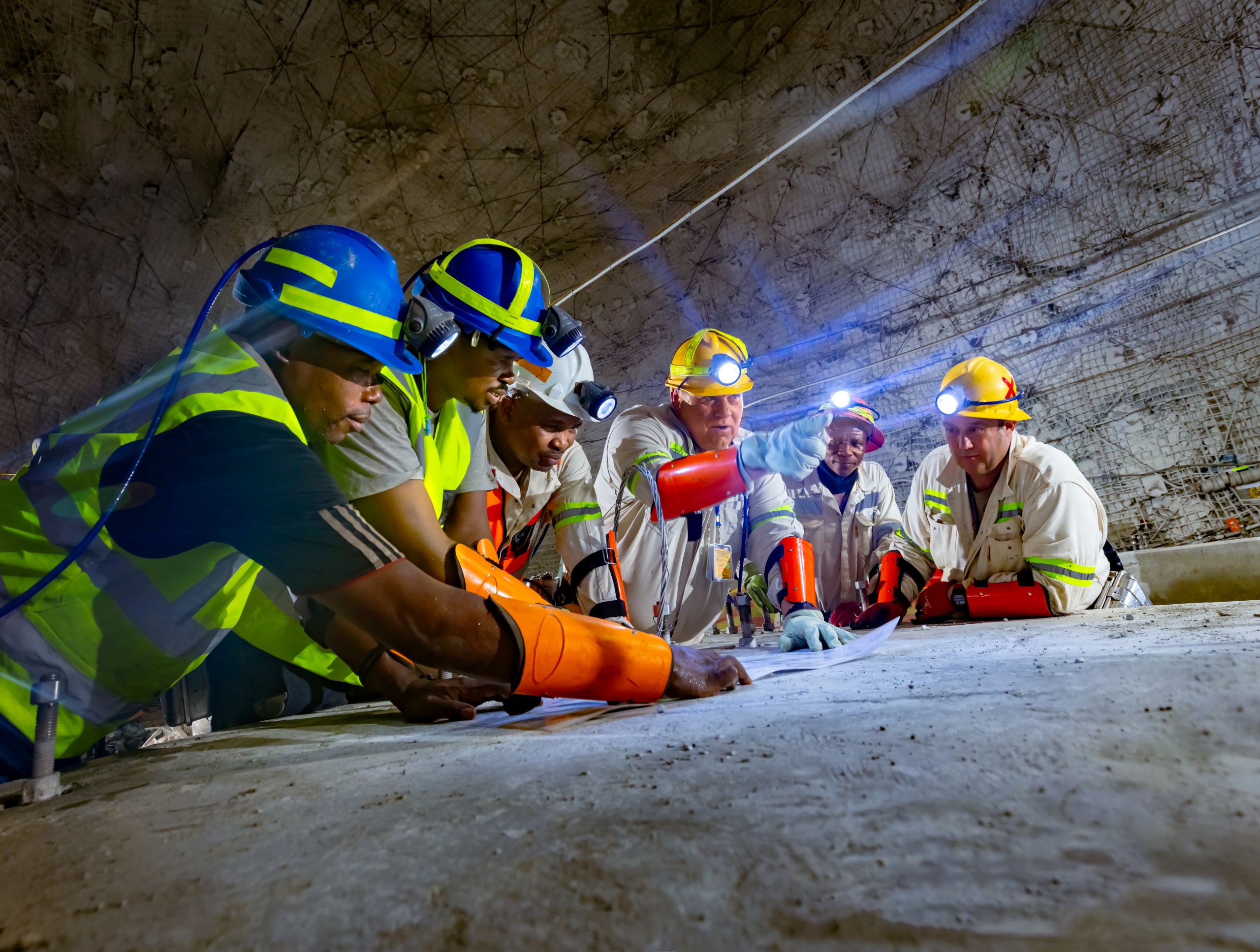
Further information
See below for information on
our approach to employees
and labour relations.
